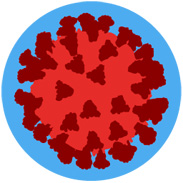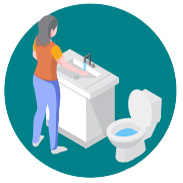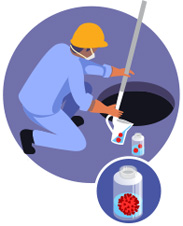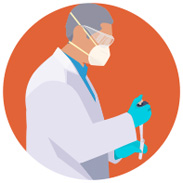How Wastewater Monitoring Works
Wastewater monitoring is an early detection tool that can help communities prepare for and take action to address increasing cases of infectious diseases.
Wastewater Monitoring—How Does It Work?: English [PDF – 630 KB] | Spanish [PDF – 1 page]

- People with certain infections (such as COVID-19), can shed pieces of the virus or bacteria when they use the bathroom, shower, wash hands, or launder clothing, even if they don’t have symptoms.


- These pieces of virus or bacteria travel from the toilet, sink, shower, or other drain through the sewage system.


- Before wastewater is treated, wastewater operators take samples to send to the laboratory.


- Laboratories test the wastewater sample to detect and report on the different types of infections that are circulating in a community. This information is available in as little as 5 to 7 days after waste enters the sewer.


- Public health officials use wastewater data to better understand disease trends in communities and make decisions, such as providing guidance on how to prevent infections or increasing testing or vaccination options.